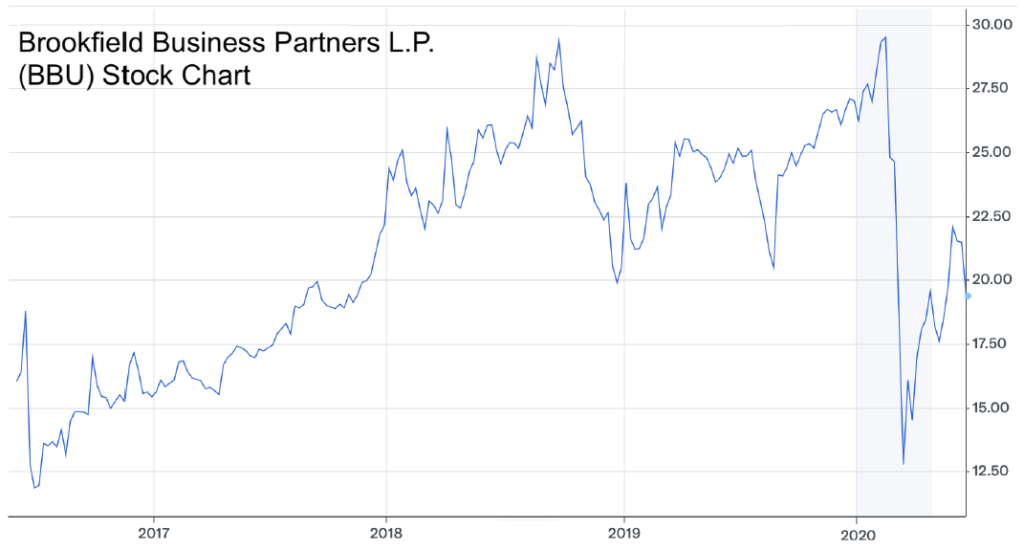The recent Brookfield Spin Off is strategically reminiscent of the successful Danaher spin-offs, transactions crafted by legendary special situation investor Joe Danaher. This move aimed to unlock value and streamline their operations. What exactly prompted Brookfield to pursue this strategic path? Let’s delve deeper into the reasons behind this decision and its implications.
Brookfield Spin Off: Why They Did It
In 2016, Brookfield Asset Management executed a strategic spin-off of Brookfield Business Partners L.P. (BBU), designed to enhance investor access to its private equity operations.
This move allowed Brookfield to consolidate its major business units into public market affiliates, thereby providing shareholders with a clearer view of the company's diverse asset management activities. The creation of BBU aimed to focus on business services and industrial operations, distinct from Brookfield's other investment sectors.
Shareholders were allocated one BBU unit for every 50 shares of Brookfield, creating a new public entity that investors could directly invest in. This spin-off allowed Brookfield Business Partners to operate with more autonomy and a distinct strategic focus, catering specifically to industrial and business service sectors. The spin-off also aimed to provide flexibility and targeted growth opportunities within these sectors, distinct from the broader asset management activities of Brookfield.
The Brookfield Spin Off aimed at optimizing the company's structure; what were the specific factors driving this decision?
One of the primary drivers of the spin-off was to unlock value for shareholders by separating business units into distinct entities, each with its own strategic priorities and operational focus. This transparency and focused approach were intended to make it easier for investors to assess and value each entity independently, potentially leading to better market performance and investor interest.
Overall, the 2016 Brookfield Business Partners spin off was a strategic move designed to streamline operations, enhance transparency, and provide a more focused investment opportunity within the industrial and business service sectors. By creating a standalone entity, Brookfield aimed to capitalize on growth opportunities and improve market visibility for its private equity operations, benefiting both the parent company and its shareholders.

Understanding Brookfield Asset Management spun off Brookfield Business Partners, what factors drove this decision?
Brookfield Spin Off: What Pushed It?
The Brookfield spin-off was driven by a strategic need to consolidate its major business units and provide a clearer investment opportunity for shareholders. The decision aimed to enhance transparency within the company's complex organizational structure, allowing investors to better understand and assess the value of its private equity operations. By creating a standalone entity, Brookfield sought to streamline its operations and focus on business services and industrial operations, which were distinct from its other investment sectors.
One of the primary motivations behind the spin-off was to unlock value for shareholders. By separating Brookfield Business Partners into its own public entity, investors gained direct access to its private equity group, making it easier to evaluate and invest in these assets. This move also allowed Brookfield Business Partners to operate with more autonomy, focusing on targeted growth opportunities within the industrial and business service sectors. The spin-off provided flexibility and a distinct strategic focus, which could lead to better market performance and investor interest.
Overall, the 2016 spin-off was a strategic decision aimed at optimizing Brookfield's corporate structure and improving market visibility. The creation of Brookfield Business Partners allowed the company to capitalize on growth opportunities in specific sectors while providing shareholders with a transparent and focused investment vehicle. This move not only benefited the parent company by streamlining its operations but also offered a more attractive proposition for investors seeking exposure to Brookfield's private equity activities.
Brookfield Asset Management faced challenges in 2016, let's explore the specific factors that contributed to their performance decline.
Why was Brookfield Asset Management Falling?
Brookfield Asset Management was falling due to market volatility and underperformance in key sectors like real estate and infrastructure. These factors impacted the company's financial results and led to a decline in investor confidence in Brookfield's extensive portfolio, which includes property, renewable power, infrastructure, and private equity, which was not immune to the broader market downturns.
The company's investments in these sectors faced headwinds due to economic uncertainties and changing regulatory landscapes. This led to lower-than-expected returns and impacted investor confidence in Brookfield's ability to deliver consistent growth.
To address these challenges, Brookfield Asset Management focused on strategic initiatives aimed at optimizing its asset allocation and improving operational efficiencies. The company also sought to enhance transparency and communication with investors to rebuild trust and demonstrate its long-term value proposition. These efforts were part of a broader strategy to navigate the difficult market conditions and position the company for future growth.
Despite the hurdles, Brookfield Asset Management remained committed to its long-term investment philosophy and continued to pursue opportunities in its core sectors. The company's resilience and strategic focus helped it weather the storm and set the stage for a rebound in subsequent years. By addressing the underlying issues and adapting to market conditions, Brookfield aimed to strengthen its position and deliver better performance for its shareholders.
The Brookfield Spin Off created new investment opportunities for shareholders; how has this move impacted the company?
Despite facing challenges, Brookfield Asset Management has made strategic adjustments to strengthen its position. Is Brookfield still a good company to invest in, given its recent performance and market conditions?
Is Brookfield Still a Good Company To Invest In?
Yes, Brookfield is a very good company to invest in demonstrating strong returns, driven by price appreciation and consistent dividend payouts. The company's focus on accretive share buybacks has further enhanced shareholder value. These efforts have contributed to a solid financial performance, making Brookfield an attractive option for investors seeking long-term growth.
Brookfield has consistently delivered attractive returns through a combination of capital appreciation and dividend income. The company has a track record of increasing its dividend payments, providing a steady stream of income for investors.
Brookfield's strategy of repurchasing shares has been accretive, meaning that the buybacks have increased the value of the remaining shares, benefiting shareholders by reducing the total number of shares outstanding and boosting earnings per share.
In addition to its financial performance, Brookfield's diversified portfolio across property, renewable power, infrastructure, and private equity offers stability and growth potential. The company's investments are spread across various sectors and geographies, reducing the risk associated with any single investment. This diversification allows Brookfield to capitalize on opportunities in different markets and sectors, providing a balanced approach to growth.
Collectively, Brookfield's strategic initiatives and commitment to operational efficiencies have positioned it well to navigate market challenges and capitalize on emerging opportunities. The company's focus on enhancing shareholder value through dividends, share buybacks, and diversified investments makes it a compelling investment choice. Brookfield's resilience and adaptability have helped it weather economic uncertainties and continue to deliver strong returns, making it a good company to consider for long-term investment.
In 2016, Brookfield Asset Management completed the Brookfield Spin Off of Brookfield Business Partners L.P. (BBU) to streamline operations and enhance investor access to its private equity group. This strategic move allowed Brookfield to focus on core asset management while providing direct exposure to BBU's business services and industrial operations. Despite market volatility and operational complexities, the spin-off demonstrated strong annualized returns through price appreciation, dividends, and accretive share buybacks, ultimately enhancing shareholder value.








